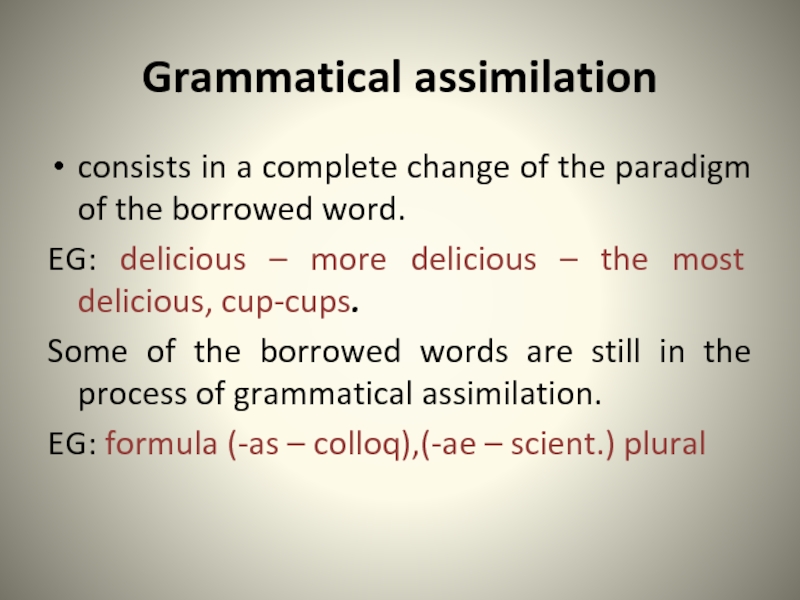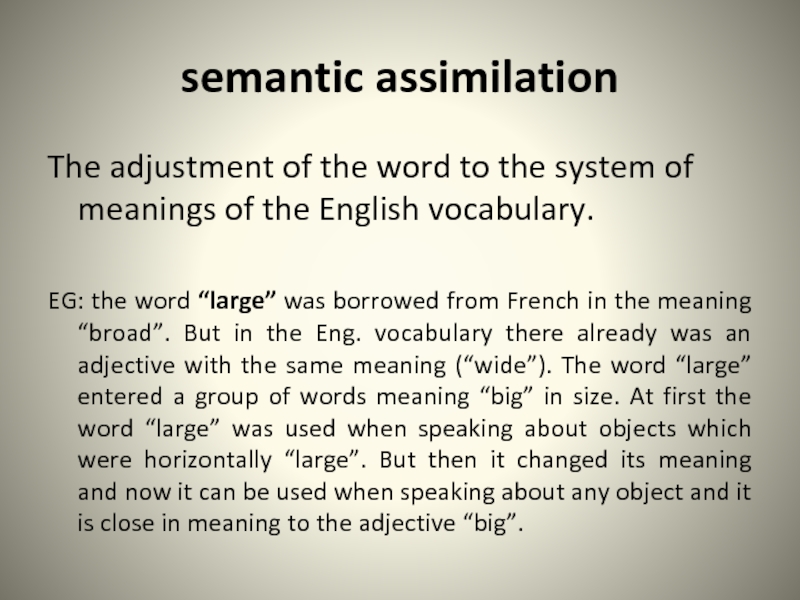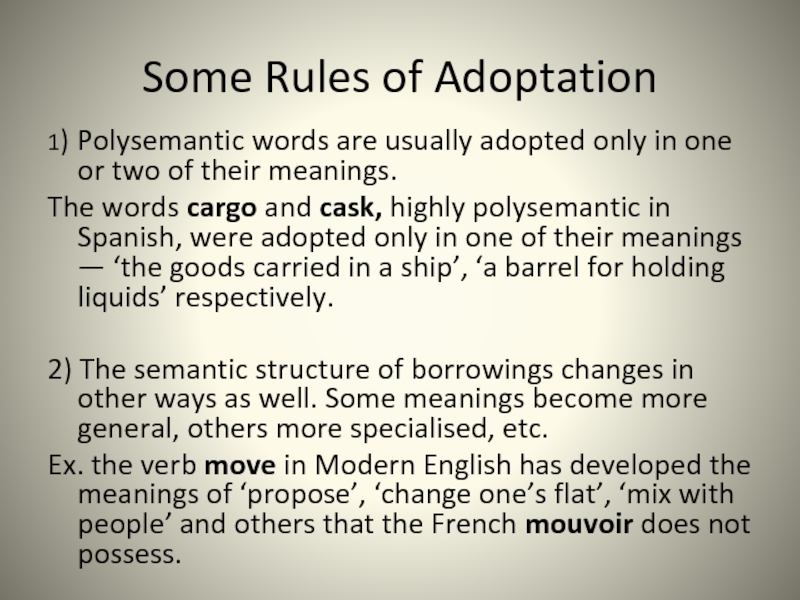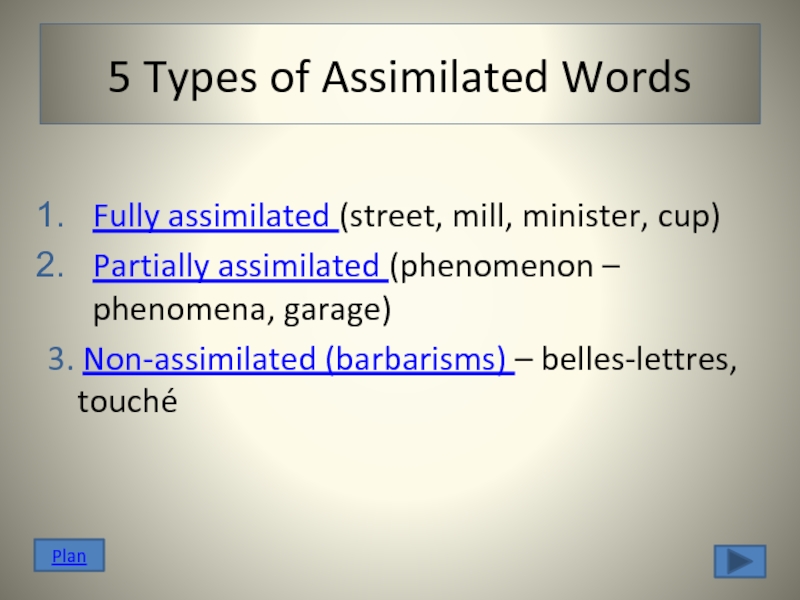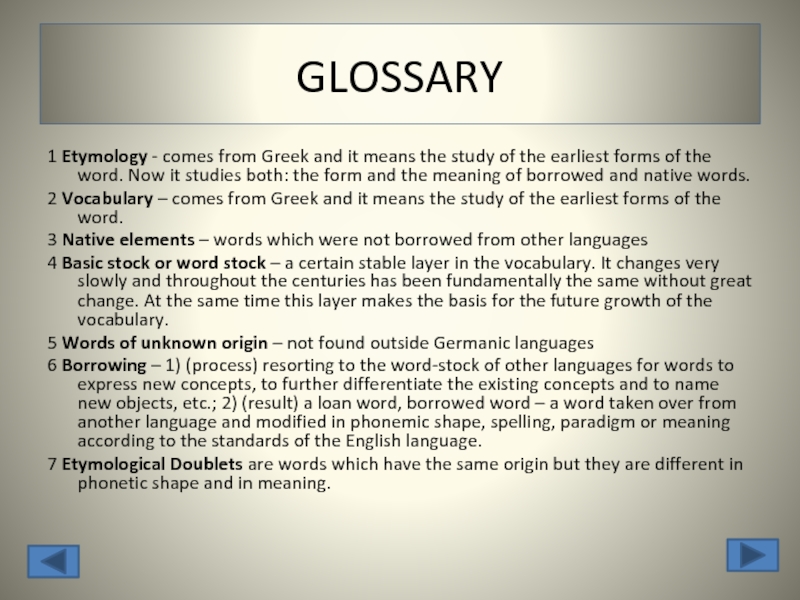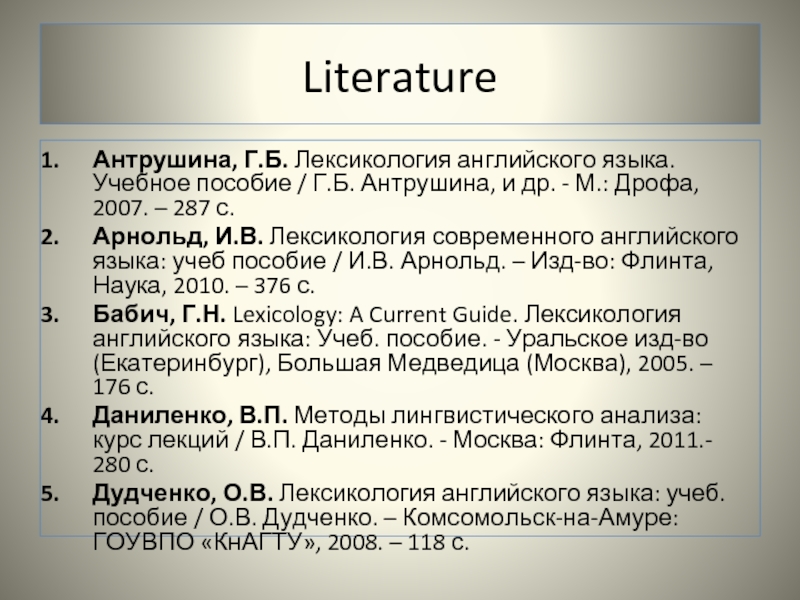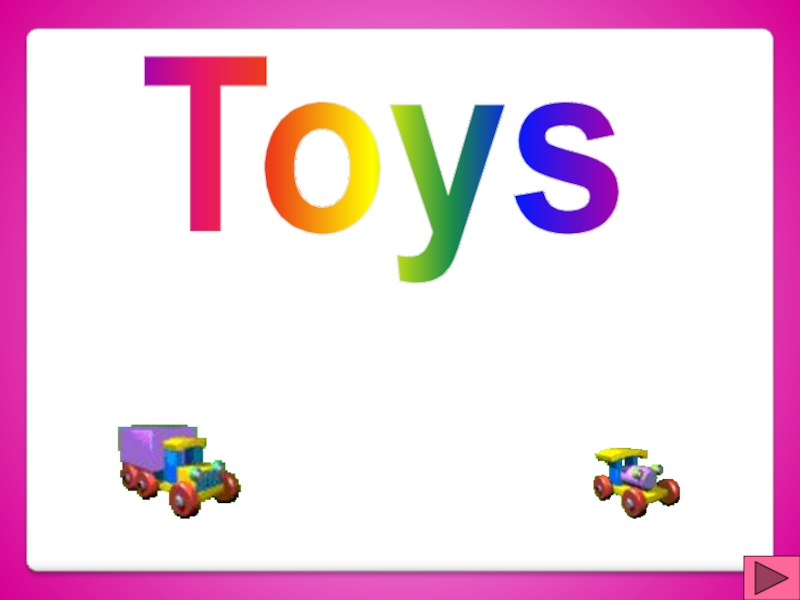- Главная
- Разное
- Дизайн
- Бизнес и предпринимательство
- Аналитика
- Образование
- Развлечения
- Красота и здоровье
- Финансы
- Государство
- Путешествия
- Спорт
- Недвижимость
- Армия
- Графика
- Культурология
- Еда и кулинария
- Лингвистика
- Английский язык
- Астрономия
- Алгебра
- Биология
- География
- Детские презентации
- Информатика
- История
- Литература
- Маркетинг
- Математика
- Медицина
- Менеджмент
- Музыка
- МХК
- Немецкий язык
- ОБЖ
- Обществознание
- Окружающий мир
- Педагогика
- Русский язык
- Технология
- Физика
- Философия
- Химия
- Шаблоны, картинки для презентаций
- Экология
- Экономика
- Юриспруденция
Etymological Characteristics of the Modern English Lexicon презентация
Содержание
- 1. Etymological Characteristics of the Modern English Lexicon
- 2. PLAN 1 The basic stock of the
- 3. 1 The Basic Stock of the English
- 4. “English is characterized by the mixed character
- 5. http://public.oed.com/media/twominuteoed/public.html Explore 1,000 years of English in two minutes
- 6. “Basic Stock” or Word Stock The English
- 7. 2 its etymology Ex. hand (n.)
- 8. Etymologically the basic stock of the English
- 9. Indo-European Words names of kingship; names
- 10. The first are the oldest words
- 11. Common Germanic Words They form the bulk
- 12. Unknown Origin buy – byegan only Germanic
- 13. 2 Reasons and Ways of Borrowings Borrowing
- 14. There are different reasons for borrowing words:
- 15. Extralinguistic (historic) reasons Culture Fashion Art Food
- 16. Linguistic reasons a gap in vocabulary
- 17. 2) a different point of view
- 18. Ways of Borrowing Borrowings enter the language
- 19. Oral borrowing took place chiefly in
- 20. Written borrowing happened in recent times.
- 21. Linguistic borrowings are a dilemma: are
- 22. 3 Types of borrowing The following types
- 23. Loan words proper words borrowed from another
- 24. Translation loans (calques) words and expressions formed
- 25. Etymological Doublets are words which have the
- 26. Doublets appeared in English in different ways
- 27. Etymological hybrids are derivational words that
- 28. International words are the words, borrowed
- 29. Translator’s false friends are the words
- 30. 1) English-Russian and Russian-English dictionary of
- 31. Test Match the translation borrowings on the
- 32. 4 Assimilation of Borrowed Words Assimilation is
- 33. Borrowed words get assimilated in 3 main
- 34. 3) the consonant combinations [pn], [ps],
- 35. Grammatical assimilation consists in a complete
- 36. semantic assimilation The adjustment of the
- 37. Some Rules of Adoptation 1) Polysemantic words
- 38. 5 Types of Assimilated Words Fully
- 39. unassimilated borrowings or barbarisms Test State the
- 40. Summary 1) A pure language actually is
- 41. GLOSSARY 1 Etymology - comes from Greek
- 42. Literature Антрушина, Г.Б. Лексикология английского языка. Учебное
Слайд 1
Etymological Characteristics of the Modern English Lexicon
©Malysheva, 2012
Lecture 5, 6
the 4th
Слайд 2PLAN
1 The basic stock of the English vocabulary and its peculiarities
2
3 Types of borrowings
4 Assimilation of borrowings
5 Types of assimilated words
Слайд 31 The Basic Stock of the English Vocabulary and its Peculiarities
What
The vocabulary of any language doesn’t remain the same but changes constantly.
The vocabulary is an open system and the number of words cannot be stated with certainty.
The term Etymology (from Greek) means the study of the earliest forms of the word.
Plan
Слайд 4“English is characterized by the mixed character of its vocabulary “
Слайд 5
http://public.oed.com/media/twominuteoed/public.html
Explore 1,000 years of English in two minutes
Слайд 6“Basic Stock” or Word Stock
The English basic stock has some peculiarities:
1
ex. hand has more
than 20 meanings
[www.visualthesaurus.com]
Слайд 7
2 its etymology
Ex. hand (n.) [www.etymonline.com]
O.E. hond, hand "hand; side; power,
Слайд 8Etymologically the basic stock of the English vocabulary falls into 3
a) words of the general Indo-European origin
b) words of the common Germanic origin
c) words of unknown origin
Слайд 9Indo-European Words
names of kingship;
names of phenomena of nature;
names of animals
parts of human body (nose – нос – nasus – Nase);
names of the most frequent actions (stand – stande – стоять);
adjectives naming concrete properties (red – rod – rufus – рудый);
most of the numerals (two – duo – два);
some pronouns (I – ich – ego)
Слайд 10
The first are the oldest words in the English vocabulary. They
Ex. dēor: "animal, beast." (OE),
Cf. Tier (G), dier (Dutch), djur (Swedish),
dyr (Norwegian and Danish)
Слайд 11Common Germanic Words
They form the bulk of the most frequent elements
parts of the human body (head, hand, arm, finger, bone);
animals (bear, fox, calf);
plants (oak, fir, grass);
natural phenomena (rain, frost);
seasons of the year (winter, spring, summer);
landscape features (sea, land).
Слайд 12Unknown Origin
buy – byegan only Germanic origin, not found outside Germanic
girl - gyrle "child" (of either sex);
lady - from O.E. hlæfdige "mistress of a household, wife of a lord," lit. "one who kneads bread," from hlaf "bread" (see loaf) + -dige "maid";
horse - O.E. hors
Слайд 132 Reasons and Ways of Borrowings
Borrowing is
resorting to the word-stock of
a loan word, borrowed word – a word taken over from another language and modified in phonemic shape, spelling, paradigm or meaning according to the standards of the English language (result) .
Plan
Слайд 14There are different reasons for borrowing words: linguistic and extralinguistic
Auto-machine
(1840—1916)
Extralinguistic (historic) reasons include wars and conquest and peaceful contacts as well.
Слайд 15Extralinguistic (historic) reasons
Culture
Fashion
Art
Food
Trade
so on
filetto (It) - filet (Fr) - fillet (En)
sciampagna
frangia (It) - frange (Fr) - fringe (origin. on tents, now a type of haircut) (En)
Слайд 16Linguistic reasons
a gap in vocabulary - the words were borrowed
EG: potato, tomato were borrowed from Spanish, when these vegetables were brought to the British island.
Balaclava - "woolen head covering," especially worn by soldiers
Evidently named for village near Sebastopol, Russia, site of a battle Oct. 25, 1854, in the Crimean War. But the term (originally Balaclava helmet) does not appear before 1881 and seems to have come into widespread use in the Boer War. The British troops seem to have suffered from the cold in the Crimean War, and the usage might be a remembrance of that conflict.
Слайд 17
2) a different point of view on the same object. This
Ex: to adore
to love
to like
The French word “to adore” was added to native words “to like” and “to love” to denote the strongest degree of the process.
Слайд 18Ways of Borrowing
Borrowings enter the language in two ways:
through oral
(by immediate contact between the peoples)
through written speech
(by indirect contact through books, etc.)
Слайд 19
Oral borrowing took place chiefly in the early periods of history
Words borrowed orally are usually short, are assimilated more readily, they undergo considerable changes in the act of adoption.
e.g. L. inch, mill, street
Слайд 20
Written borrowing happened in recent times.
Such words preserve their spelling
e.g. Fr. communiqué, belles-lettres, naïveté (naivety (En)
Слайд 21
Linguistic borrowings are a dilemma: are they necessary to the development
Слайд 223 Types of borrowing
The following types of borrowings can be distinguished:
Loan
Translation loans (calques)
Etymological Doublets
International words
Translator’s false friends
Etymological hybrids
Plan
Слайд 23Loan words proper
words borrowed from another language and assimilated to this
Ex. Table, skirt, mill
Слайд 24Translation loans (calques)
words and expressions formed from the material already existing
EG: from the Russian language: пятилетка – five-year plan,
from German: Wunderkind – wonder child,
from Italian: prima ballerina – first dancer.
Слайд 25Etymological Doublets
are words which have the same origin but they are
Слайд 26Doublets appeared in English in different ways
1) One of the pair
2) Both words are borrowed, but from different languages. EG: senior (from Latin) sir (from French)
3) Both words are borrowed from one of the same language, but at different periods of time. EG: cavalry (Normandy French) – кавалерия. Chivalry (Parisian Language) – рыцарство (ch-показывает о более позднем происхождение). humour and humid.
4) Shortening may bring to life etymological doublets. EG: history and story, defense and fence.
3
Слайд 27Etymological hybrids
are derivational words that are formed by means of
Thus almost immediately after the borrowing of the word sputnik the words pre-sputnik, sputnikist, sputnikked, to out-sputnik.
London – (L.) Londinium (c.115), often explained as "place belonging to a man named Londinos," a supposed Celtic personal name meaning "the wild one“
Beautiful
Слайд 28International words
are the words, borrowed by several languages denoting the
Ex. phonetics, physics, dynamite, kangaroo, sauna, fauna
http://www.answers.com/library/International+Word+Origins
Слайд 29Translator’s false friends
are the words from different languages which are
Слайд 30
1) English-Russian and Russian-English dictionary of “the false friends of a
2) German-Russian and Russian-German dictionary of “the false friends of a translator” by Gotlib K.G.
Слайд 31Test
Match the translation borrowings on the left with the original phrases
попутчик
fellow-traveller
wonder child
Wunderkind
first dancer
словосочетание
word-combination
prima-ballerina
Слайд 324 Assimilation of Borrowed Words
Assimilation is the result or adaptation of
The phenomenon by which two languages are put in contact and borrow words one from the other is known as interference.
A lexical borrowing occurs when a group of speakers is put in contact with a foreign word and adopts it in their language. Usually, there are substantial changes in its morphology, in the pronunciation and even in the meaning.
Plan
Слайд 33Borrowed words get assimilated in 3 main fields: phonetic, grammatical and
Phonetic assimilation comprises changes in sound-form and stress. It is most obvious.
Sounds that were unfamiliar to the English language were fitted into its scheme of sounds.
Ex. 1) the long [e] and [ε] are rendered with the help of [ei] (as in café).
2) In words from French or Latin the accent was gradually transferred to the first syllable (honour, reason)
Слайд 34
3) the consonant combinations [pn], [ps], [pt] in the words pneumatics,
4) For the same reason the initial [ks] was changed into [z] (as in Gr. xylophone).
Слайд 35Grammatical assimilation
consists in a complete change of the paradigm of
EG: delicious – more delicious – the most delicious, cup-cups.
Some of the borrowed words are still in the process of grammatical assimilation.
EG: formula (-as – colloq),(-ae – scient.) plural
Слайд 36semantic assimilation
The adjustment of the word to the system of
EG: the word “large” was borrowed from French in the meaning “broad”. But in the Eng. vocabulary there already was an adjective with the same meaning (“wide”). The word “large” entered a group of words meaning “big” in size. At first the word “large” was used when speaking about objects which were horizontally “large”. But then it changed its meaning and now it can be used when speaking about any object and it is close in meaning to the adjective “big”.
Слайд 37Some Rules of Adoptation
1) Polysemantic words are usually adopted only in
The words cargo and cask, highly polysemantic in Spanish, were adopted only in one of their meanings — ‘the goods carried in a ship’, ‘a barrel for holding liquids’ respectively.
2) The semantic structure of borrowings changes in other ways as well. Some meanings become more general, others more specialised, etc.
Ex. the verb move in Modern English has developed the meanings of ‘propose’, ‘change one’s flat’, ‘mix with people’ and others that the French mouvoir does not possess.
Слайд 385 Types of Assimilated Words
Fully assimilated (street, mill, minister, cup)
Partially assimilated
3. Non-assimilated (barbarisms) – belles-lettres, touché
Plan
Слайд 39unassimilated borrowings or barbarisms
Test
State the etymology of the given words. Circle
completely assimilated borrowings
partially assimilated borrowings
Soyuz
gate
want
tzatziki
sabotage
ad libitum
torchere
corps
stimulus
criterion
parquet
Слайд 40Summary
1) A pure language actually is a utopia; every language (unless
2) Anyway, the prime mover in linguistic borrowings is the individual speaker who, after being put in contact with a written or a spoken foreign word, forms an acoustic image in his mind, which , after a so called processing period, becomes a borrowed term.
3) During the processing period, the speaker adapts the foreign word to the morphology and the phonetics of its own language, trying to transform all the morphological or /and phonetic features which don't exist in the language he speaks.
Plan
Слайд 41GLOSSARY
1 Etymology - comes from Greek and it means the study
2 Vocabulary – comes from Greek and it means the study of the earliest forms of the word.
3 Native elements – words which were not borrowed from other languages
4 Basic stock or word stock – a certain stable layer in the vocabulary. It changes very slowly and throughout the centuries has been fundamentally the same without great change. At the same time this layer makes the basis for the future growth of the vocabulary.
5 Words of unknown origin – not found outside Germanic languages
6 Borrowing – 1) (process) resorting to the word-stock of other languages for words to express new concepts, to further differentiate the existing concepts and to name new objects, etc.; 2) (result) a loan word, borrowed word – a word taken over from another language and modified in phonemic shape, spelling, paradigm or meaning according to the standards of the English language.
7 Etymological Doublets are words which have the same origin but they are different in phonetic shape and in meaning.
Слайд 42Literature
Антрушина, Г.Б. Лексикология английского языка. Учебное пособие / Г.Б. Антрушина, и
Арнольд, И.В. Лексикология современного английского языка: учеб пособие / И.В. Арнольд. – Изд-во: Флинта, Наука, 2010. – 376 с.
Бабич, Г.Н. Lexicology: A Current Guide. Лексикология английского языка: Учеб. пособие. - Уральское изд-во (Екатеринбург), Большая Медведица (Москва), 2005. – 176 с.
Даниленко, В.П. Методы лингвистического анализа: курс лекций / В.П. Даниленко. - Москва: Флинта, 2011.- 280 с.
Дудченко, О.В. Лексикология английского языка: учеб. пособие / О.В. Дудченко. – Комсомольск-на-Амуре: ГОУВПО «КнАГТУ», 2008. – 118 с.
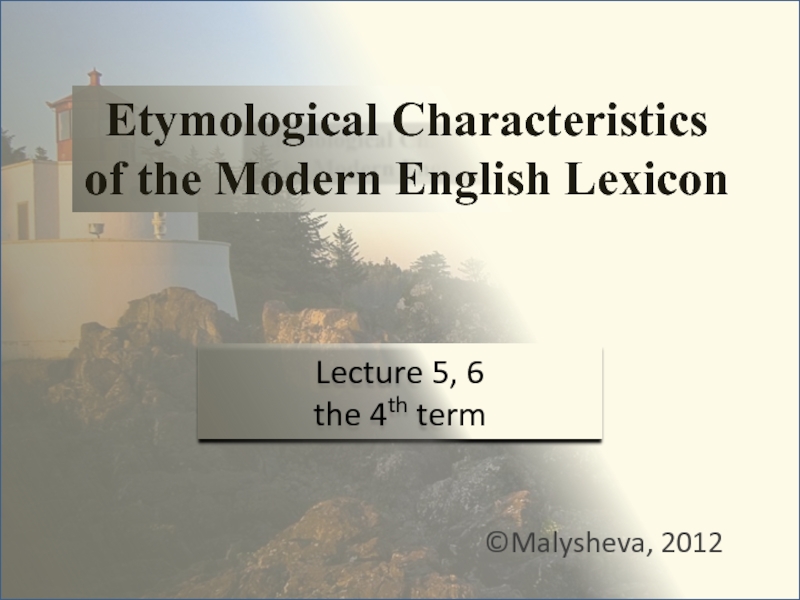

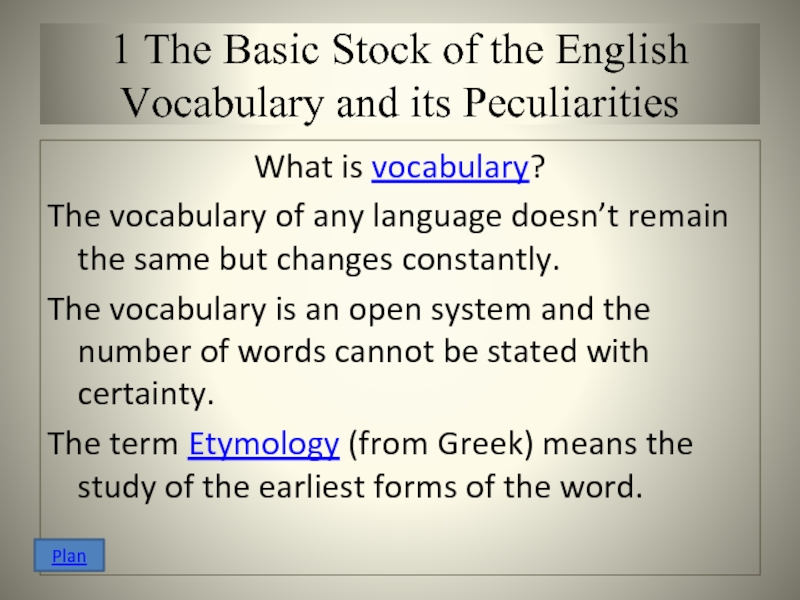
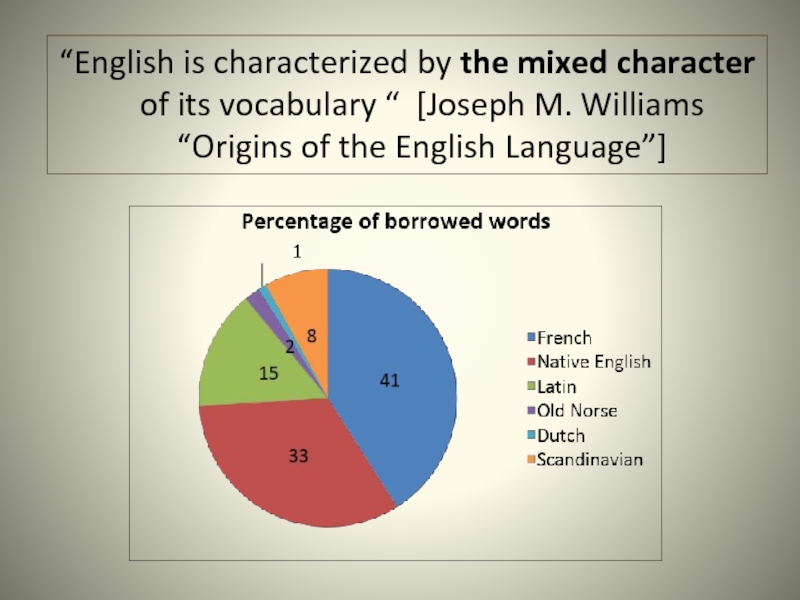
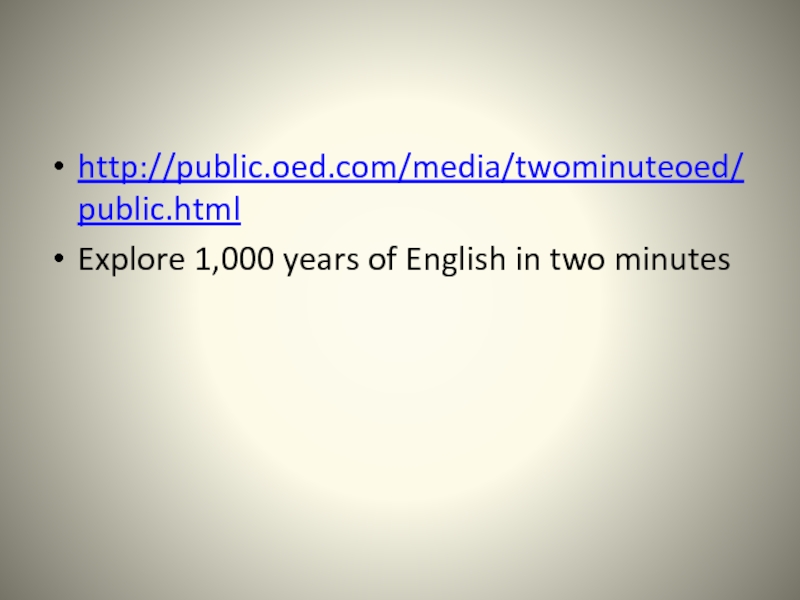

![2 its etymology Ex. hand (n.) [www.etymonline.com] O.E. hond, hand](/img/tmb/2/146522/a0ca6566ec8bb5701b24a1701dd3640e-800x.jpg)
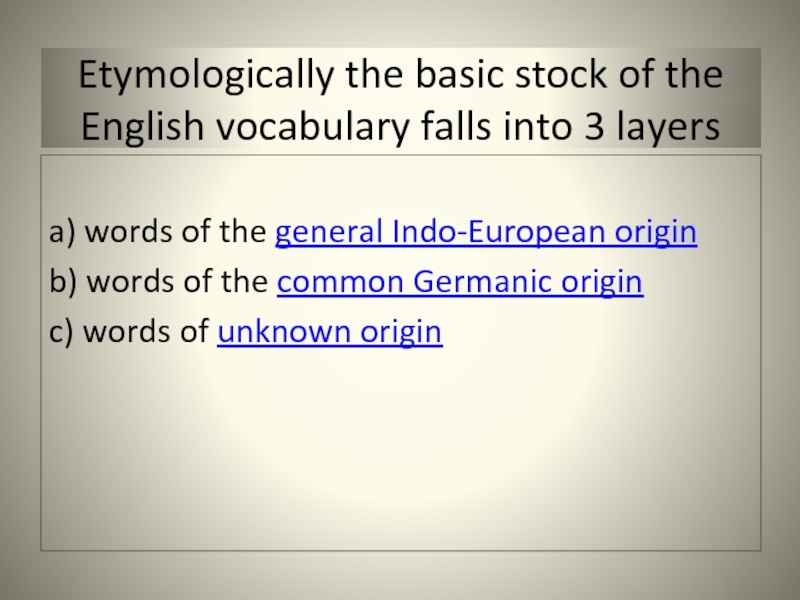
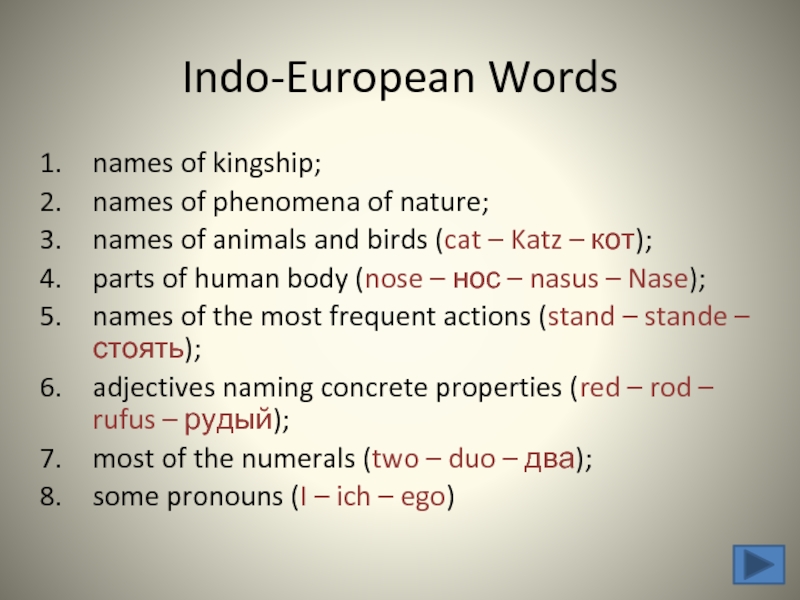
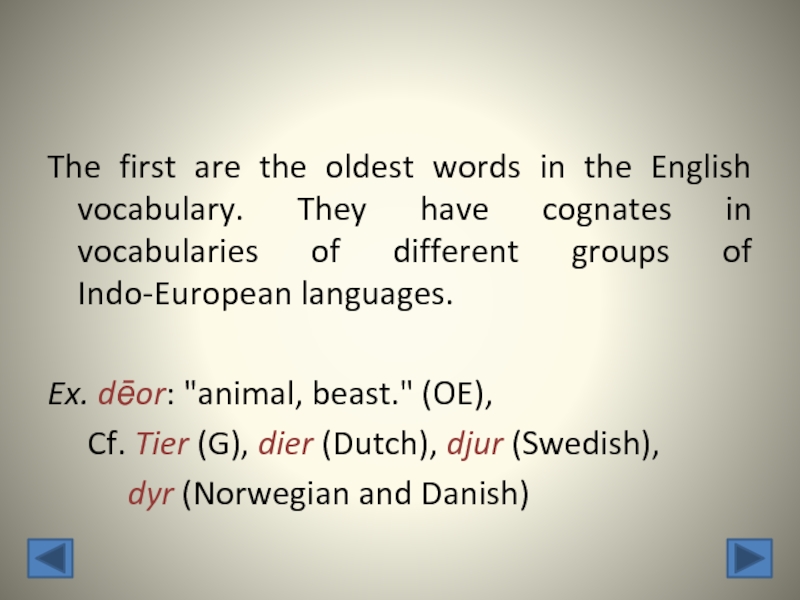

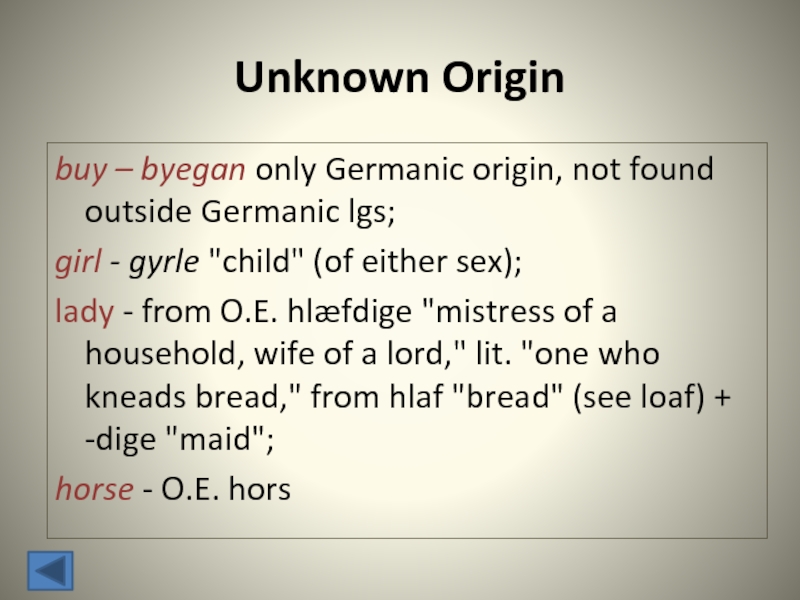
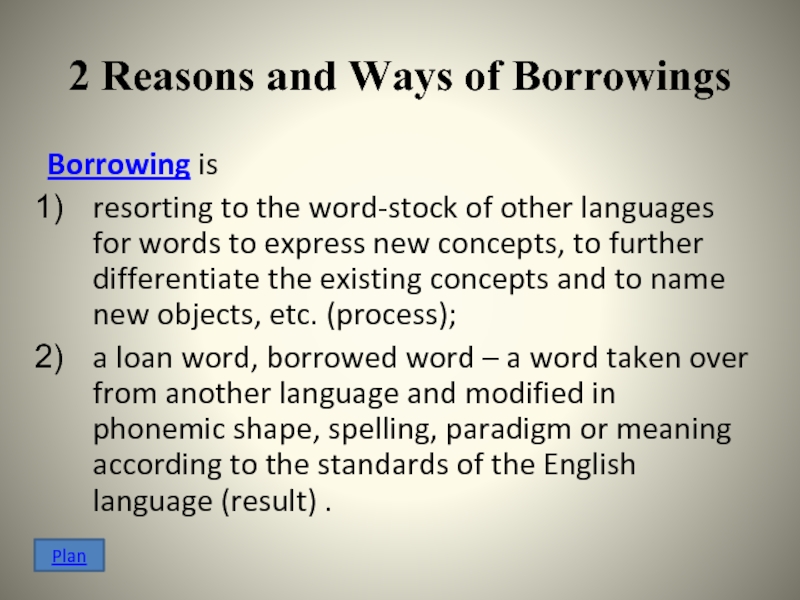
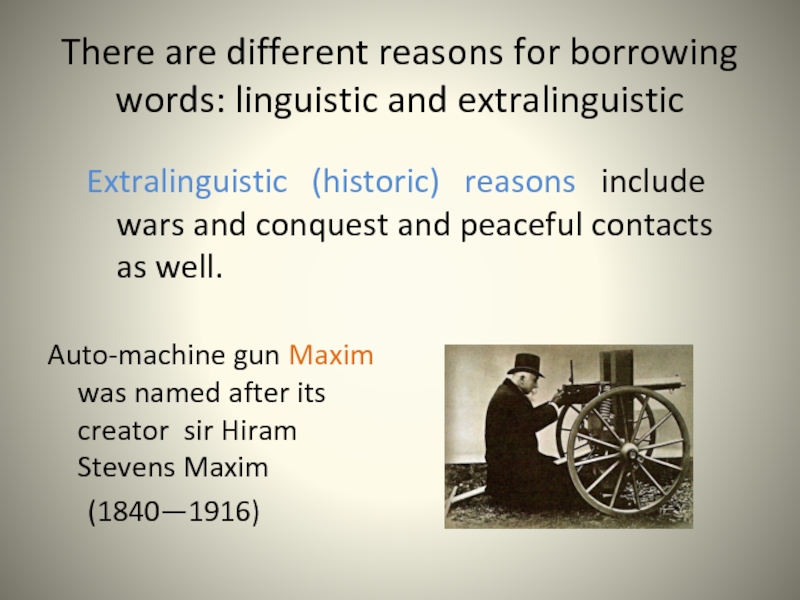
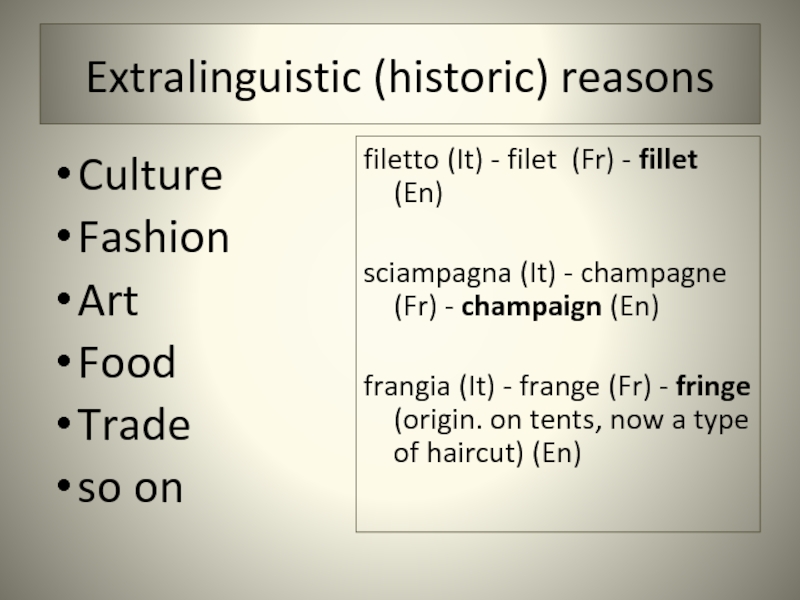
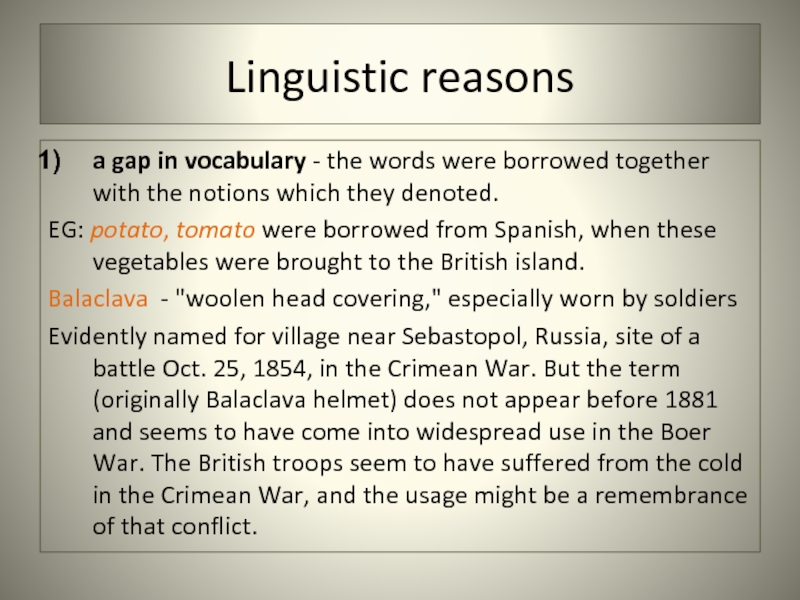
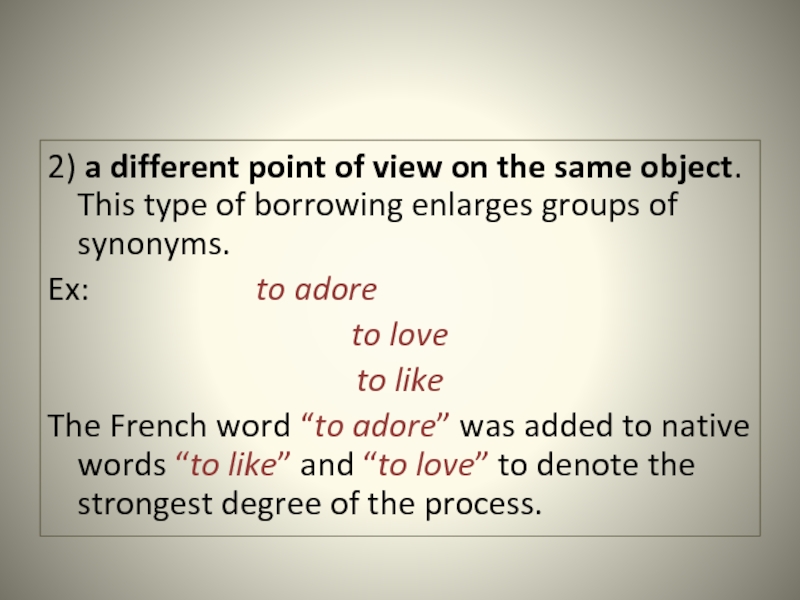

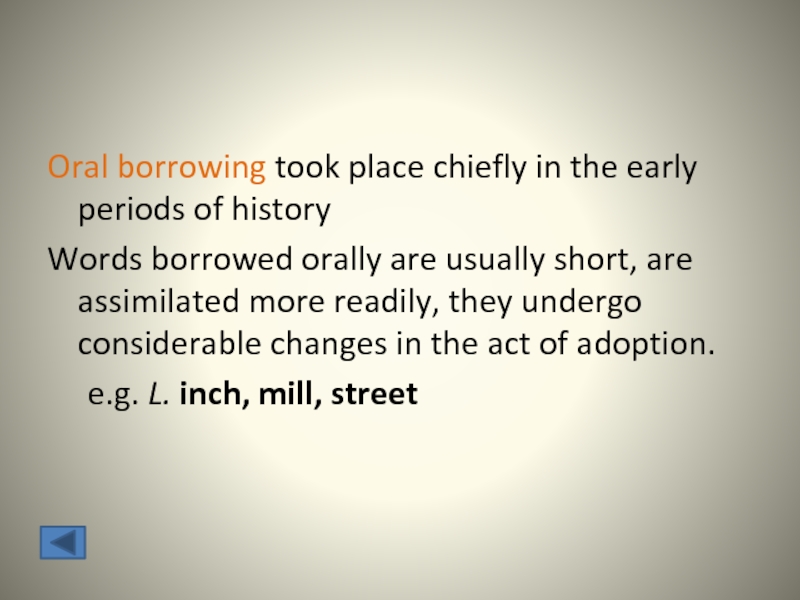
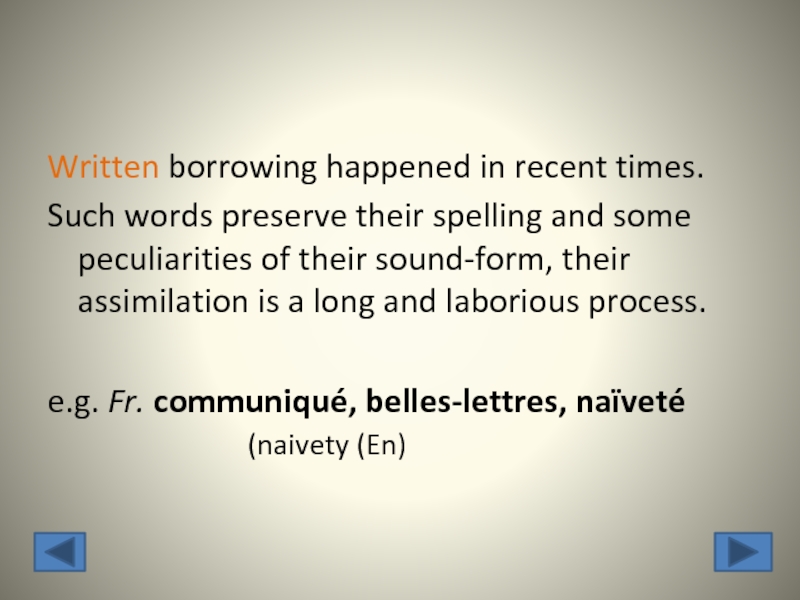




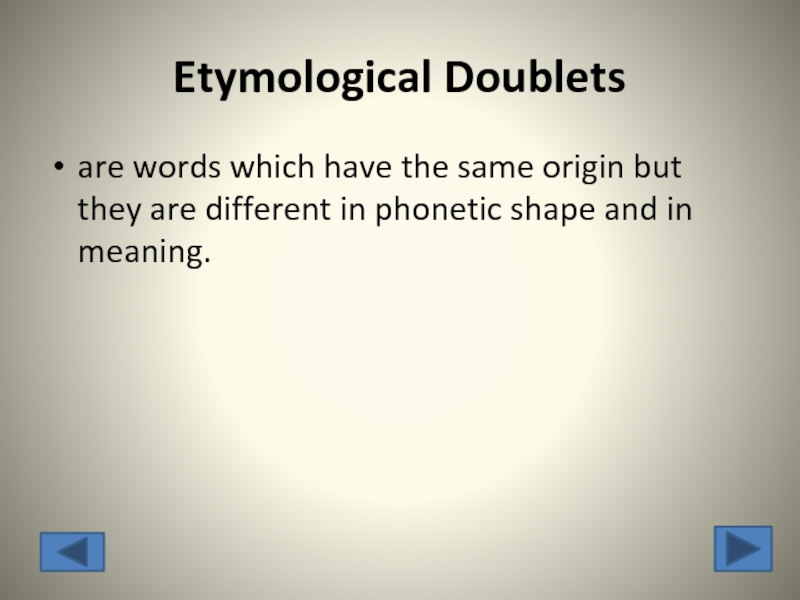

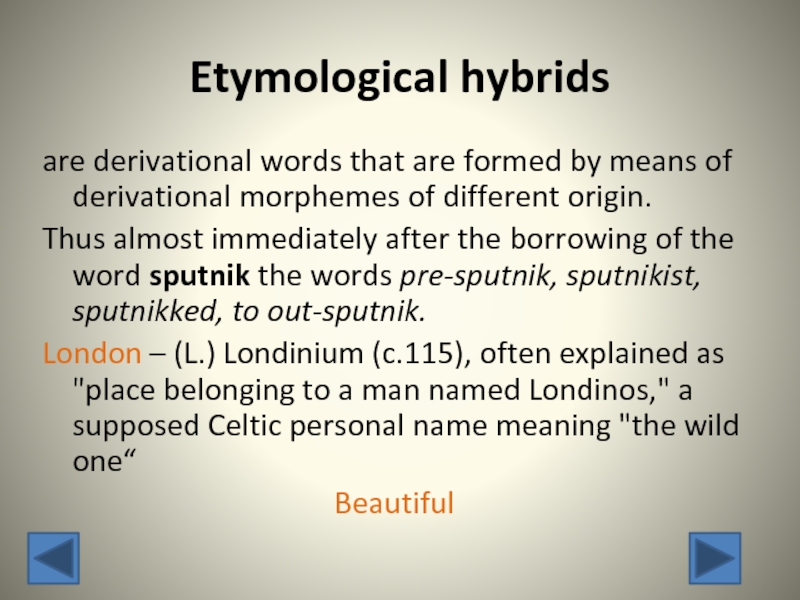
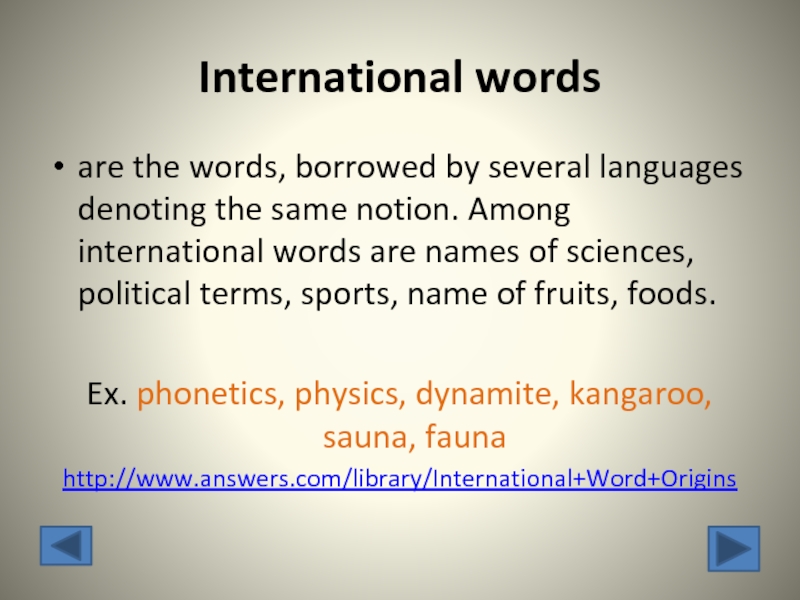

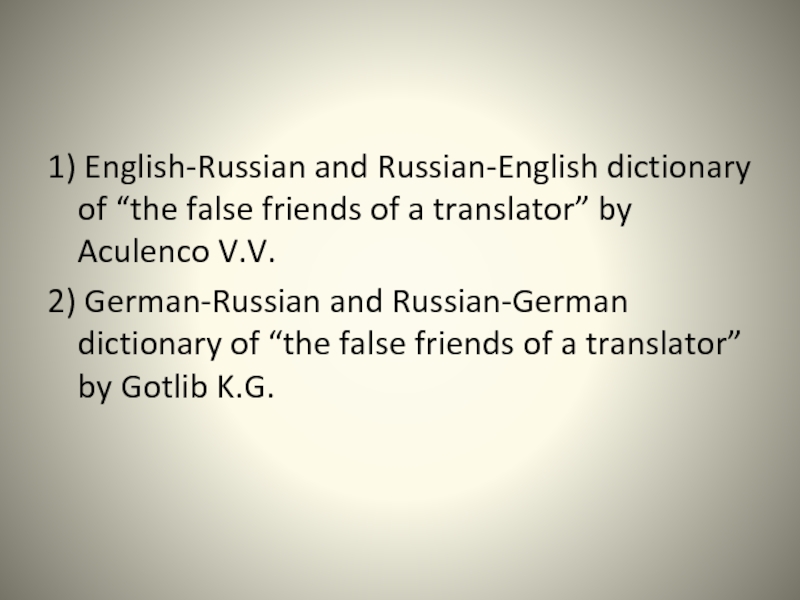

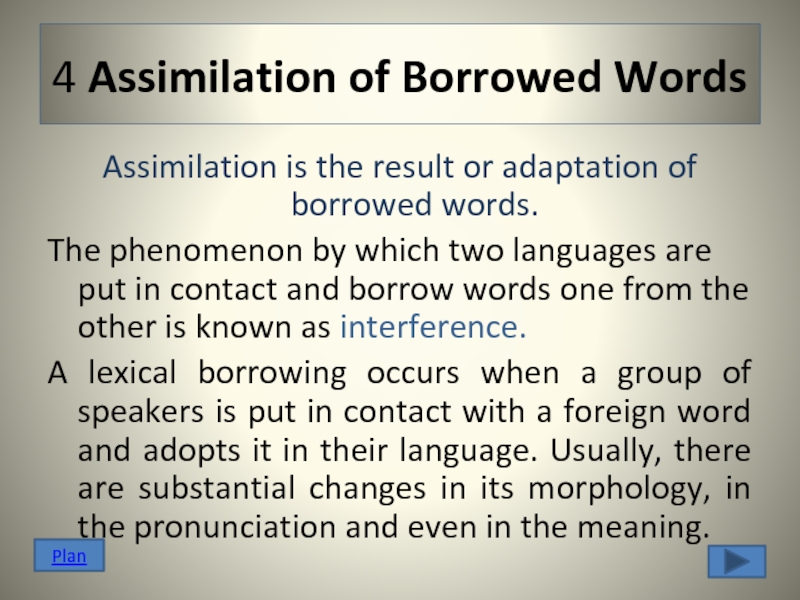
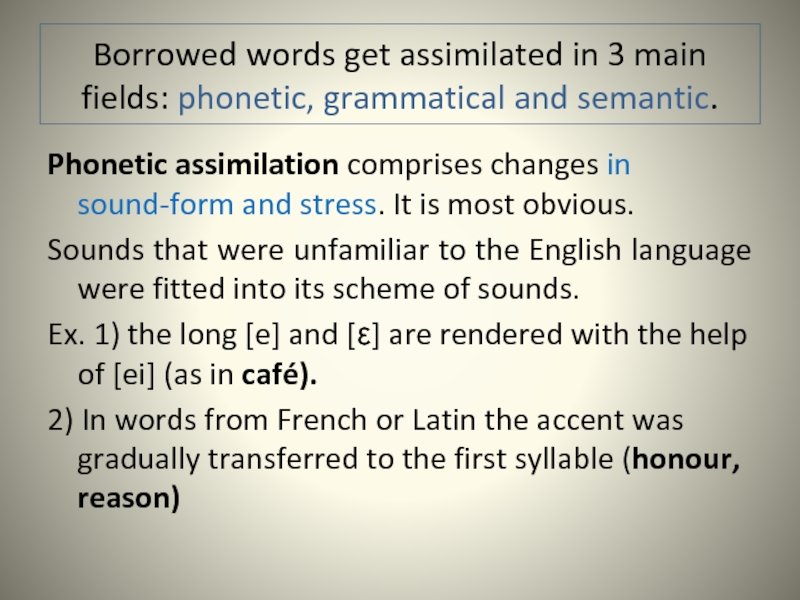
![3) the consonant combinations [pn], [ps], [pt] in the words pneumatics, psychology, Ptolemy were simplified](/img/tmb/2/146522/c6c61d65ea72a8905a88bb51bf2c55b7-800x.jpg)
